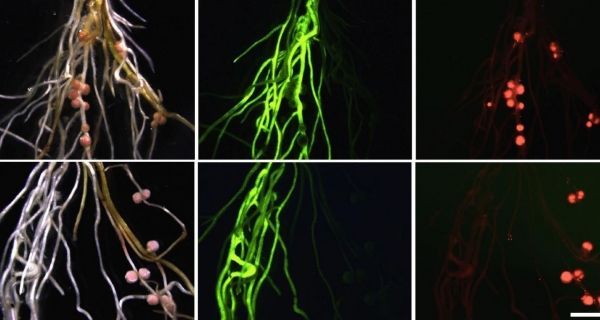New findings show that a micro RNA from the shoot keeps legume roots susceptible to symbiotic infection by downregulating a gene that would otherwise hinder root responses to symbiotic bacteria. These findings help us understand what it takes to make nitrogen-fixing symbiosis efficient, and what we need to do to exploit it agronomically.
An international research team reveals that a small RNA sequence, called micro RNA miR2111, travels from leaves to roots in legume plants that can form a nitrogen-fixing symbiosis with root bacteria. Once in the root, miR2111 ensures that the plant is susceptible to symbiotic infection. Roots express a gene that will normally hinder root responses to symbiotic bacteria, and miR2111 interferes with the activity of this gene. The findings also explain why roots without shoots are unable to embark in nitrogen-fixing symbiosis, and have just been published in the international journal Science.
The new findings overturn our previous understanding of how plants control symbiosis, as the results reveal that mechanisms regulating infection are already in place before the plant gets in contact with bacteria. This resource-costly solution ensures a rapid plant response once the right bacteria are present, underlining that control-at-all-times is vital for a host plant to prevent abuse.
Read more at Aarhus University
Image: Upper panel: Wild type roots form nodules whether or not they are transgenic (the latter are marked by green fluorescence). Lower panel: Downregulation of miR2111 in transgenic roots (marked by green fluorescence) leads to reduced symbiosis. Nitrogen-fixing nodules (red fluorescence) preferentially form on non-transgenic roots that have normal miR2111 activity. (Credit: Katharina Markmann)


